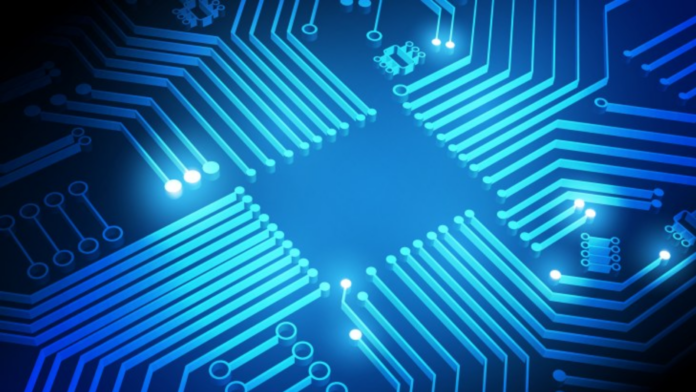Imagine a new computing paradigm that slashes the costs of running AI models. That’s precisely what Lemurian Labs, an early-stage startup founded by ex-Google, Intel, and Nvidia employees, is striving to achieve. With the burgeoning demand for GPU chips in generative AI models, Lemurian Labs aims to construct a chip that offers similar power at a reduced cost. Their groundbreaking approach involves altering the mathematics within the chip and creating a logarithmic number system that provides superior precision and dynamics. While hardware development demands time and resources, the company intends to unveil the software component of their stack next year. Backed by a $9 million seed investment and a cadre of highly skilled engineers, Lemurian Labs aspires to lower costs and boost the efficiency of constructing generative AI models.
Overview of Lemurian Labs
Lemurian Labs is an early-stage startup founded by former employees of Google, Intel, and Nvidia. Their mission is to revolutionize accelerated computing and construct a novel computing paradigm that diminishes the cost of operating AI models. They aim to achieve this by developing a new chip and software that make processing AI workloads more accessible, efficient, cost-effective, and eco-friendly. The company recently disclosed a $9 million seed investment, which will bolster the advancement of their innovative technologies.
Current Challenges in AI Computing
AI computing encounters various challenges that Lemurian Labs seeks to address through their pioneering computing paradigm. One challenge is the surging demand for GPU chips. As the resource requirements of generative AI models burgeon, more potent and efficient computing solutions are imperative. Another challenge is the current computing paradigm itself, which is hindered by semiconductor physics. The conventional strategy of moving data to computing resources is becoming less effective, necessitating a new approach that curtails data transfer and amplifies computational efficiency.
Increasing Demand for GPU Chips
The demand for GPU chips has reached historic highs, driven by the resource needs of generative AI models. These models entail massive computational power for data processing and generation. Consequently, GPUs have become the preferred hardware for AI computing. Nevertheless, the spiraling demand for GPUs has led to supply limitations and escalating expenses. Lemurian Labs acknowledges the need for a more affordable alternative that can deliver commensurate processing power.
Issues with Existing Compute Paradigm
The extant compute paradigm confronts limitations that curtail its efficacy in AI computing. The traditional approach necessitates data movement to computing resources, potentially incurring high latency and inefficiencies. As AI workloads become progressively intricate and data-intensive, this approach becomes increasingly problematic. A fresh paradigm that minimizes data transfer and augments computational efficiency is imperative.
Physics of Semiconductors Limitations
Semiconductor physics pose constraints to the current compute paradigm. As technology advances, the physical limitations of semiconductors become more pronounced. The prevailing architecture and paradigm are stretched to their limits, prompting exploration of alternative solutions. Lemurian Labs endeavors to develop a new chip capable of surmounting these limitations and providing an efficient, cost-effective AI computing solution.
Introducing a New Compute Paradigm
Lemurian Labs endeavors to introduce a new compute paradigm that confronts the challenges and constraints of the existing approach. Their approach revolves around the concept of moving compute resources to the data, rather than the converse. By curtailing data transfer and optimizing interconnections, Lemurian Labs aspires to craft a more efficient and cost-effective solution for AI computing.
Flipping the Approach to Data and Compute
Lemurian Labs proposes a paradigm shift where compute resources are brought to the data, instead of the inverse. This approach minimizes the distance data must traverse, reducing latency and enhancing efficiency. By bringing compute to the data, Lemurian Labs aims to maximize compute efficiency and curtail the energy and time expended on data movement.
Minimizing Data Movement
One of the chief priorities in Lemurian Labs’ new compute paradigm is the reduction of data movement. Data movement can engender high latency and inefficiencies, especially in large-scale AI workloads. By minimizing the necessity of shuttling data between storage and compute resources, Lemurian Labs aspires to optimize the overall computational process and diminish the time required for processing AI models.
Significance of Interconnects
Interconnects play a pivotal role in Lemurian Labs’ new compute paradigm. They facilitate the efficient movement of data and compute resources within the system. Optimizing interconnects can substantially boost performance and reduce latency. By prioritizing the development of efficient, high-speed interconnects, Lemurian Labs aspires to enhance the overall performance and efficiency of their compute solution.
The Achilles Heel of GPUs
While GPUs have become the go-to hardware for AI computing, they are not without limitations and drawbacks. GPUs were originally designed for graphics-related tasks, leveraging parallel processing capabilities for rendering and processing visual data. However, this adaptability comes at a cost. GPUs may not be optimized for every task, and their performance can falter when handling a broad spectrum of workloads. Addressing these limitations is pivotal for advancing AI computing.
Original Purpose of GPUs
Initially, GPUs were devised for graphics processing, demanding swift rendering and processing of visual data. Their parallel processing capabilities rendered them well-suited for the intricate calculations integral to rendering graphics. However, as the demand for AI computing burgeoned, GPUs were repurposed for AI workloads owing to their processing prowess and parallelism-handling capabilities.
Limitations and Drawbacks
Despite their potency and versatility, GPUs harbor limitations when it comes to AI computing. Their architecture, initially tailored for graphics processing, may not be fully optimized for AI workloads, potentially resulting in diminished performance and inefficiencies when tackling specific tasks. GPUs are also energy-intensive, inflating the operational expenses of running AI models. Addressing these limitations is indispensable for enhancing the efficiency and cost-effectiveness of AI computing solutions.
Necessary Improvements
To surmount GPUs’ limitations, Lemurian Labs strives to make substantial enhancements in AI computing. By developing a new chip and software stack, they aim to optimize the processing of AI workloads. This encompasses addressing the architectural restrictions of GPUs, augmenting energy efficiency, and amplifying overall performance. Through these improvements, Lemurian Labs endeavors to furnish a more efficient and cost-effective AI computing solution.
The Logarithmic Approach
Lemurian Labs’ innovative approach revolves around the application of a logarithmic number system in lieu of the conventional floating-point system. The logarithmic number system proffers several advantages over the floating-point system, including the capability to supplant expensive multiplications and divisions with more economical additions and subtractions. This not only bolsters energy efficiency but also augments speed and precision.
Advantages of Log Number System
The log number system bestows numerous advantages in AI computing. Foremost among these is the ability to substitute costly multiplication and division operations with cheaper addition and subtraction operations. This leads to substantial energy savings and heightened efficiency. Additionally, the log number system furnishes superior dynamic range and precision in comparison to the conventional floating-point system.
Supplanting Expensive Multiplies and Divides
In conventional floating-point systems, multiplication and division operations can be computationally exorbitant. Through the utilization of a logarithmic number system, Lemurian Labs aspires to supplant these expensive operations with more economical additions and subtractions. This not only diminishes the overall computational expenditure but also augments energy efficiency. Logarithmic calculations hold the potential to provide a more cost-effective












